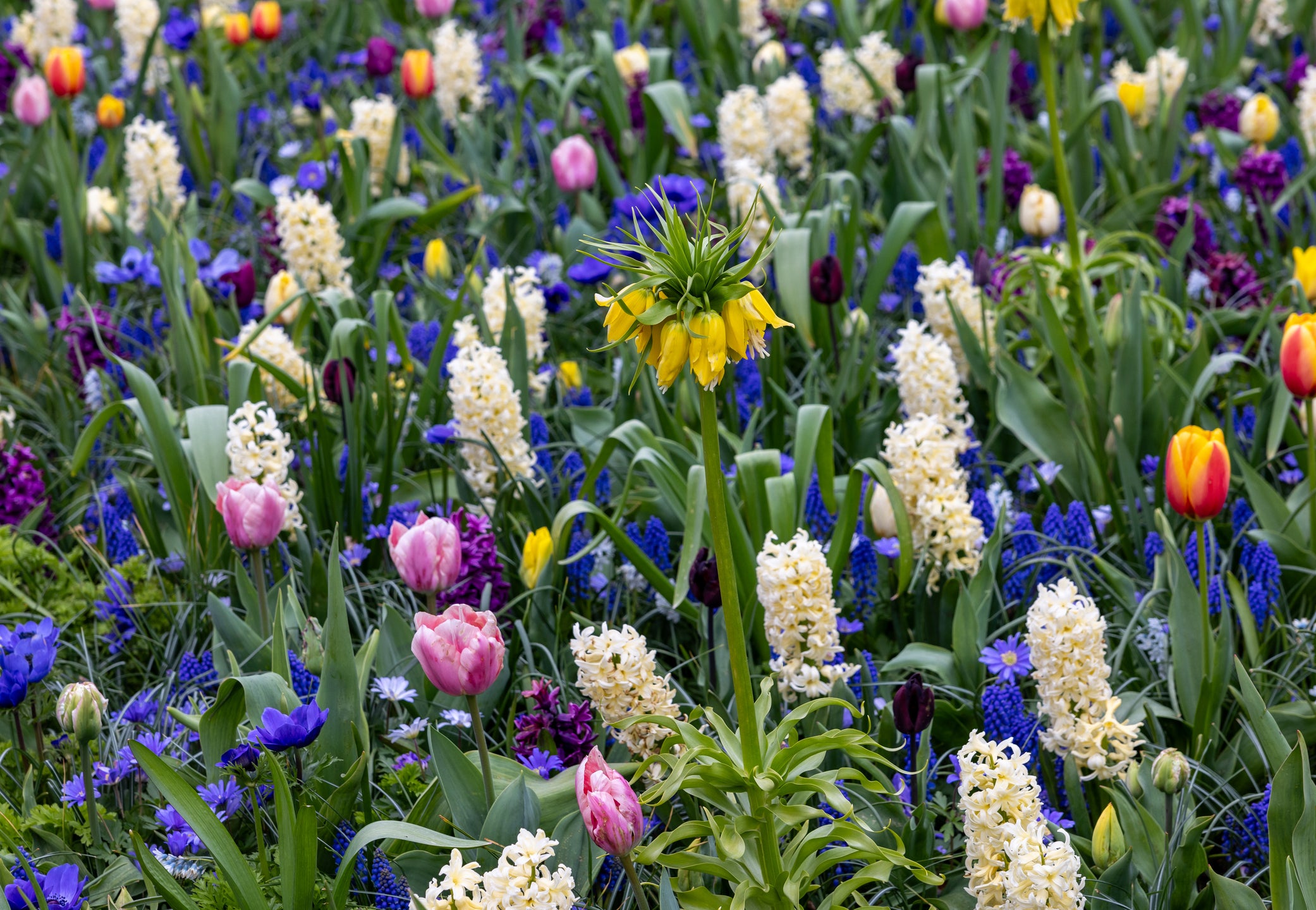Fall is the season of preparation, especially when it comes to planting spring bulbs. In the Pacific Northwest, the mild winters and cool springs create the perfect environment for a wide variety of bulbs, ensuring a spectacular bloom when spring arrives. This guide will walk you through selecting and planting popular spring bulbs like tulips, daffodils, crocuses, peonies, and others that thrive in our region. We’ll also cover essential tips on soil conditions, planting depth, and spacing to ensure your garden is ready for a vibrant display.
Why Plant Bulbs in Fall?
Fall planting allows bulbs to develop strong roots before the winter freeze, giving them the head start they need for a healthy spring bloom. In the Pacific Northwest, the consistent rainfall and cool fall temperatures create ideal conditions for bulb planting.
When selecting bulbs, it’s important to choose varieties that will thrive in our unique climate. Here are some of the best options:
- Tulips: A classic spring favorite, tulips bring bold colors and elegant shapes to any garden. They thrive in well-drained soil and prefer full sun.
- Daffodils: These cheerful, hardy flowers are known for their resilience and ability to naturalize, making them a reliable choice for long-lasting blooms.
- Crocuses: One of the first signs of spring, crocuses are small but impactful, popping up with vibrant colors in early spring.
- Peonies: While not technically a bulb, peonies are often planted in fall and produce large, fragrant blooms in late spring. They require well-drained soil and plenty of sunlight.
- Hyacinths: Known for their sweet fragrance and dense clusters of flowers, hyacinths add a lovely touch of color and scent to the spring garden.
- Alliums: These ornamental onions produce striking globe-shaped flowers and are deer-resistant, making them a good choice for gardens prone to wildlife damage.
Soil Preparation for Successful Bulb Growth
The Pacific Northwest’s rainy winters make proper soil preparation essential to prevent bulbs from rotting. Follow these guidelines to create the ideal environment for your bulbs:
- Well-drained soil: Bulbs are prone to rot in waterlogged soil, so amend heavy clay soils with organic matter like compost or coarse sand to improve drainage.
- Soil pH: Most spring bulbs prefer a slightly acidic to neutral pH (6.0-7.0). You can test your soil and adjust, if necessary, by adding lime to raise the pH or sulfur to lower it.
- Sun exposure: Choose a location that receives full sun to partial shade. Most spring bulbs, including tulips and daffodils, prefer a spot with at least six hours of sunlight.

Planting Depth and Spacing for Spring Bulbs
Proper planting depth and spacing are crucial to ensuring healthy bulbs and avoiding overcrowding. Below are the recommendations for the most popular bulbs:
- Tulips: Plant 6-8 inches deep and space 4-6 inches apart.
- Daffodils: Plant 6 inches deep and space 6-8 inches apart.
- Crocuses: Plant 3-4 inches deep and space about 3 inches apart.
- Peonies: Plant peony roots with the "eyes" (buds) no more than 2 inches below the soil surface. Space them 3 feet apart, as peonies can grow quite large.
- Hyacinths: Plant 6 inches deep and space 4-6 inches apart.
- Alliums: Depending on the variety, plant 6-8 inches deep and space 8-12 inches apart.
A general rule is to plant bulbs at a depth that is three times the height of the bulb. This ensures they are insulated during winter and have enough space to grow. The best time to plant bulbs in the Pacific Northwest is between late September and November, before the ground freezes but after the summer heat has passed. Planting too early may cause bulbs to sprout prematurely, while planting too late can prevent root development.
Watering and Mulching
After planting, water the bulbs thoroughly to help them settle into the soil and start root development. Once planted, bulbs don’t need a lot of extra water, as the region's fall and winter rains typically provide enough moisture. If you experience an unusually dry fall, water the bulbs occasionally to keep the soil moist. Mulching helps protect bulbs from temperature fluctuations and prevents weeds. Apply a 2–3-inch layer of mulch, such as shredded leaves, straw, or bark, after planting to insulate the soil and retain moisture.
Protecting Your Bulbs from Wildlife
Some bulbs, like tulips, are a favorite snack for squirrels and other rodents. To protect your bulbs, consider placing a wire mesh or hardware cloth over the planting site before covering it with soil. Alternatively, consider planting daffodils and alliums, which are less appealing to wildlife.
Fertilizing Your Bulbs
Spring bulbs don’t require much fertilization when planted in well-prepared soil. However, applying a slow-release, balanced fertilizer (10-10-10) when planting can give your bulbs an extra boost. In spring, you can apply another light feeding of fertilizer when the first shoots appear.
By planting the right bulbs and following proper soil preparation and planting techniques, you can enjoy a beautiful spring garden in the Pacific Northwest. Whether you’re looking for the classic elegance of tulips and daffodils or the unique beauty of peonies and alliums, fall is the perfect time to get your bulbs in the ground. With the right care and attention, your garden will be bursting with color when spring arrives.
Plant now for a stunning spring display! Visit our website for more information about gardening tips and inspiration or to shop online.

Leave a comment